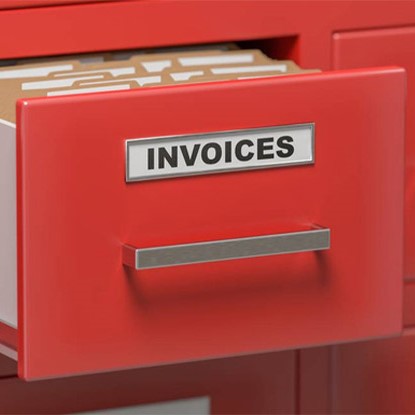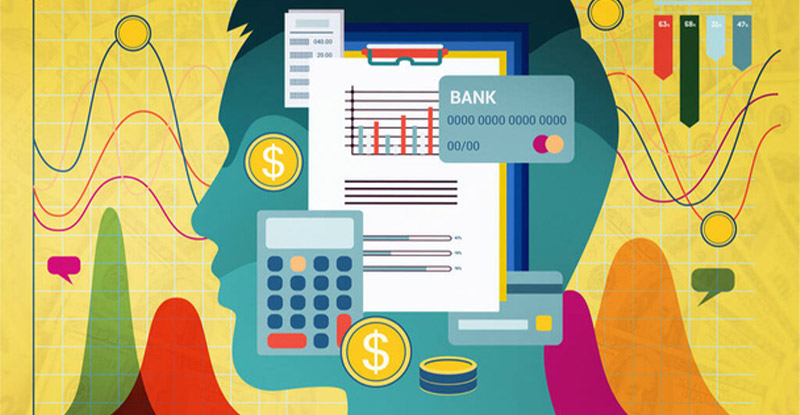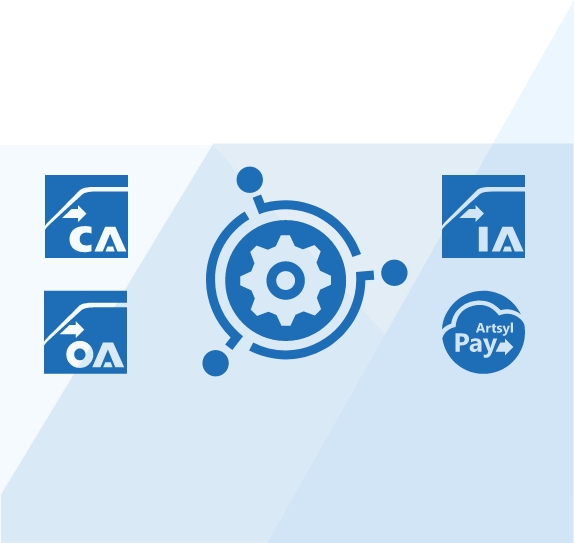As a business owner, you know that invoicing is one of the most important aspects of your business operations. It is how you get paid for the products or services you offer to your clients. But do you know what invoice reconciliation is and why it is essential to the success of your business?
Key Takeaways
Invoice reconciliation is the process of comparing your invoices to your payment records to ensure that all payments have been processed correctly. In this guide, we will take a closer look at invoice reconciliation and its importance to your business.
Invoice Reconciliation Process
Invoice reconciliation is the process businesses use to ensure that the invoices issued by suppliers match the company’s purchase orders, delivery receipts, and payment transactions. It’s a crucial step in accounting that confirms whether the amounts charged are accurate and correspond to the goods or services received. Here’s a general outline of the process:
- Gathering Documents: The first step is to collect all relevant documents, including invoices from suppliers, purchase orders issued by the company, and any delivery receipts or proof of services rendered.
- Review and Match Documents: Each invoice is matched against the corresponding purchase order and delivery receipt. This is to check that the quantities, prices, item descriptions, and terms on the invoice align with the company’s records and the actual goods or services received.
- Identifying Discrepancies: Any discrepancies between the invoice and the company’s records are identified. This could be due to incorrect quantities, mispriced items, or unauthorized purchases.
- Resolving Discrepancies: Once discrepancies are identified, they must be resolved. This may involve contacting the supplier to discuss the differences and request a corrected invoice if necessary.
- Recording Transactions: After reconciliation, the invoice is recorded in the company’s accounting system as a payable if everything matches. If there are discrepancies, they need to be documented and adjusted in the financial records.
- Approval for Payment: The reconciled invoice is then sent for approval for payment. This step often involves a manager or someone with authority to approve expenditures.
- Making Payment: Once approved, payment is scheduled according to the terms agreed upon with the supplier, and the payment information is recorded in the accounting system.
- Closing the Loop: After payment, the invoice is marked as paid, and the reconciliation process for that invoice is complete. Any necessary adjustments to the accounting records are made, and reports can be generated for future audits.
Invoice reconciliation can be a manual or automated process, with many businesses moving towards automation for increased efficiency and accuracy. It’s an integral part of financial reporting and is crucial for audit readiness.
Tired of tedious, error-prone manual reconciliation?
Join the ranks of successful businesses that trust Artsyl InvoiceAction to automate their invoice matching process. Request a personalized demo and transform your financial operations.
Book a demo now
Benefits of Invoice Reconciliation
Regularly performing invoice reconciliation helps businesses manage cash flow, maintain accurate financial records, and prevent fraud. Here are more benefits of invoice reconciliation.
Prevention of Errors and Fraud with Invoice Reconciliation
Invoice reconciliation helps to prevent errors and fraudulent activities within your company. With a proper reconciliation process, you can identify any discrepancies between invoices and payments and take appropriate action. Without it, you may never know if there is an error or fraud occurring, leading to financial losses for your business.
Improved Cash Flow with Invoice Reconciliation
By reconciling your invoices, you can ensure that all payments are being processed in a timely and efficient manner. This means that you will have a more accurate picture of your cash flow, making it easier to predict and plan for future expenses and investments.
RELATED: Simplifying Full Cycle Accounts Payable Invoice Process
Better Client Relationships with Invoice reconciliation
Invoice reconciliation can also help improve your relationship with your clients. By ensuring that all payments and invoices are accurate, you demonstrate your commitment to transparency and professionalism. Clients appreciate working with businesses that take their invoicing seriously and are proactive in addressing any issues.
Time-Saving Benefits of Invoice Reconciliation
Reconciling invoices can be a time-consuming process, but it is well worth the effort. By automating the reconciliation process with software or hiring an accountant, you can save valuable time that can be spent on other aspects of your business.
Compliance During Invoice Reconciliation
Finally, invoicing and invoice reconciliation are essential for compliance with tax laws and regulations. By ensuring that all payments are recorded accurately and on time, you avoid penalties and fines that can be costly to your business.
Unlock the power of automation to enhance your bottom line. Don’t let manual invoice reconciliation slow you down. Request a consultation with our experts and see how Artsyl InvoiceAction can revolutionize your financial workflow.
Book a demo now
Invoice Matching Techniques: Integral Part of Invoice Reconciliation
Invoice matching is a critical accounting process to ensure that purchase orders, goods receipt notes, and invoices agree before payments are made. Here are some common invoice matching techniques used in the reconciliation process.
Two-Way Matching
This invoice matching technique matches the invoice amounts to the corresponding purchase order amounts. It verifies that the price and quantity billed on the invoice are as agreed upon in the purchase order.
Three-Way Matching
This invoice matching method involves matching the invoice to both the purchase order and the receiving report. It ensures that the quantity and price on the invoice correspond to both what was ordered and what was received.
Four-Way Matching
This invoice matching technique Expands on three-way matching by also including an inspection report or quality assurance document in the matching process. This is often used in industries where quality or condition upon receipt must be verified before payment, such as food services or manufacturing.
Tolerance Matching
This invoice matching method establishes an acceptable variance between the amounts or quantities on the invoice and purchase order. If discrepancies fall within the set tolerance range, the invoice is approved for payment; if not, it’s flagged for review.
RELATED: A Guide to Final Invoice: Everything You Need to Know
Automated Matching
This method utilizes software that automatically compares invoices to purchase orders and receiving documents. It streamlines the matching process, reducing the time and effort required for manual matching.
Vendor Statement Reconciliation
This method involves comparing the supplier’s statement of account with the company’s records. It helps identify any invoices that may have been missed or payments that have not been recorded by the supplier.
Exception Handling
This invoice matching method focuses on the management of mismatches or exceptions.
Exceptions are investigated and resolved through communication with vendors or internal departments to correct errors or update records.
Master Data Management
Ensures that vendor information and purchase order details are accurate and up-to-date.
Accurate master data minimizes the risk of mismatches due to outdated or incorrect information.
Predictive Analytics
Uses historical data and machine learning to predict potential errors in invoices. This technique can alert users to anomalies that could indicate a mismatch before the invoice is processed.
Each of these techniques can be used independently or in conjunction to optimize the invoice matching process, depending on the complexity of the transactions and the specific needs of the business. The goal is to improve accuracy, enhance efficiency, and maintain strong vendor relationships by ensuring timely and correct payments.
Eliminate discrepancies, reduce late payments, and ensure compliance effortlessly.
Choose Artsyl InvoiceAction for invoice reconciliation that’s always accurate and on time. Contact us now for a personalized demo.
Book a demo now
Invoice Reconciliation Best Practices
Effective invoice reconciliation is a cornerstone of sound financial management. Here are some best practices to ensure this process is efficient and error-free:
- Standardize Processes: Develop clear, standardized procedures for invoice processing and reconciliation to minimize errors and ensure consistency.
- Automate Where Possible: Utilize accounting software or specialized tools that can automate the reconciliation process, reducing the time and resources required for manual matching.
- Regular Reconciliations: Conduct reconciliations regularly, rather than allowing invoices to pile up. This helps in identifying and resolving discrepancies promptly.
- Maintain Organized Records: Keep detailed and organized records of all transactions, including purchase orders, delivery receipts, and invoices, to streamline the reconciliation process.
- Implement Three-Way Matching: Apply three-way matching as a control measure, ensuring that purchase orders, receiving reports, and invoices agree before making payments.
RELATED: Intelligent Process Automation for Shared Service Organizations
- Establish Approval Hierarchies: Set up an approval hierarchy for invoice payments, with different levels of authority based on the invoice amount.
- Clear Communication Channels: Maintain open and effective communication with vendors and within your team to quickly address any questions or discrepancies.
- Train Staff Adequately: Ensure that all team members involved in the reconciliation process are well-trained and understand the importance of accurate invoice processing.
- Set Tolerance Thresholds: Determine acceptable tolerance levels for price and quantity variances to automate approval for minor discrepancies that are within an acceptable range.
- Leverage Data Analytics: Use data analytics to identify patterns in invoicing errors or discrepancies, which can help in improving processes and negotiations with suppliers.
- Reconciliation Audits: Periodically perform audits on the reconciliation process to ensure compliance with internal controls and external regulatory requirements.
- Vendor Management: Regularly review and update vendor information to avoid delays caused by incorrect contact details or payment terms.
- Continuous Improvement: Continuously assess the reconciliation process for potential improvements and stay updated with new technologies or practices that can enhance efficiency.
- Address Discrepancies Immediately: When a discrepancy is found, address it immediately to prevent a small error from turning into a bigger problem.
- Documentation and Policy Enforcement: Ensure that every step of the reconciliation process is documented, and enforce policies strictly to prevent fraud and maintain financial integrity.
By following these best practices, businesses can reduce the risk of financial errors, improve the efficiency of their reconciliation process, and maintain good relationships with their vendors.
Invoice Automation Software
Related Videos
Final Thoughts: The Importance of Invoice Reconciliation
Invoice reconciliation is an important process for any business, large or small. It helps to prevent errors, fraud, and ensures that your cash flow is accurate. By prioritizing it, you can elevate your invoicing process and improve relationships with clients.
Reconciliation also saves time and helps your business comply with tax regulations, so it is definitely worth the effort. Invest in invoicing and reconciliation to take your business to the next level.
Be a pioneer in the world of finance by adopting Artsyl’s state-of-the-art invoicing solution. Revolutionize your invoice reconciliation process and gain a competitive edge.
Get in touch with us to learn how you can get started.
Book a demo now
FAQ
What exactly is invoice reconciliation?
Invoice reconciliation is the process of comparing internal financial records against invoice statements to ensure that all charges and payments are accounted for and properly recorded. This helps to identify any discrepancies between what has been billed and what has been delivered or agreed upon.
Why is invoice reconciliation important?
It is crucial for maintaining accurate financial records, ensuring that payments are made only for goods and services received, and for preventing fraud. It also helps in maintaining a good relationship with vendors by paying them accurately and on time.
How do I perform invoice reconciliation?
The process typically involves matching the invoice to the purchase order and the delivery receipt, verifying quantities, prices, and terms, and resolving any discrepancies before processing payment.
What are common issues found during invoice reconciliation?
Discrepancies often arise due to incorrect quantities, pricing errors, duplicate charges, unauthorized purchases, or missed discounts and rebates.
How often should invoice reconciliation be performed?
It should be done regularly, often as part of the monthly financial close process, but the frequency can increase depending on the volume of transactions and the terms of payment with vendors.
Are there tools to help with invoice reconciliation?
Yes, there are various accounting and financial software solutions that can automate and assist with the invoice reconciliation process, reducing the likelihood of human error and increasing efficiency.
What are some best practices for invoice reconciliation?
Best practices include maintaining organized records, regular reconciliation, using three-way matching, setting tolerance levels for discrepancies, and using automation software.
What should I do if I find a discrepancy during reconciliation?
Contact the vendor to discuss the discrepancy. If it’s an error, request a corrected invoice. If it’s a dispute, resolve it according to the terms and conditions of the purchase agreement.
How does invoice reconciliation help with audits?
Regular and accurate reconciliation creates a reliable audit trail, which can be critical during financial audits to prove that transactions have been processed correctly.
Do my staff need special training for invoice reconciliation?
Yes, staff should be trained in your company’s specific reconciliation procedures, the software used, and best practices to ensure they are competent in performing reconciliations accurately.



 Automated Invoice Matching with AI
Automated Invoice Matching with AI Automated Invoice Processing: Balancing Automation and Human Oversight
Automated Invoice Processing: Balancing Automation and Human Oversight AI-Powered Invoice Data Extraction: Beyond OCR
AI-Powered Invoice Data Extraction: Beyond OCR 7 Powerful Benefits of Invoice Automation for Controllers and CFO
7 Powerful Benefits of Invoice Automation for Controllers and CFO Invoice Management Guide
Invoice Management Guide Credit Invoice or Credit Note? Find Out The Difference
Credit Invoice or Credit Note? Find Out The Difference
